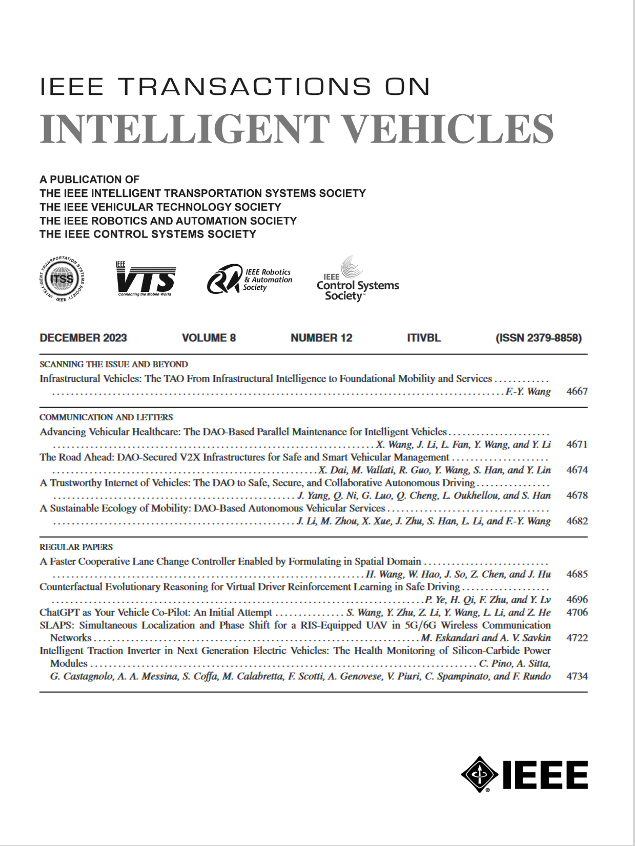异构系统的可伸缩输入状态稳定性及其在车辆队列中的应用
IF 14.3
1区 工程技术
Q1 COMPUTER SCIENCE, ARTIFICIAL INTELLIGENCE
引用次数: 0
摘要
本文研究了可能由异构子系统组成的互联非线性系统的可扩展性。为此,提出了一种适用于异构可扩展输入到状态稳定性(sISS)的Lyapunov表征。为了验证所提出的框架,我们考虑了一个非线性车辆队列场景,包括纵向和横向动力学。与现有的时域方法相比,我们展示了空间域在实现一般弯曲路径上的车辆跟随行为方面的便利性:空间域有助于解决弯曲路径上众所周知的“抄近路”现象。这种现象,指的是一个队列逐渐切断路径的曲线,通过一个基于延迟的队列策略来解决,该策略在空间域中进行了适当的设计。提出的空间域队列协议保证了可伸缩的输入到状态稳定性,尽管车辆动力学可能存在异质性。通过仿真对比,说明了该方法的优越性。本文章由计算机程序翻译,如有差异,请以英文原文为准。
Scalable Input-to-State Stability of Heterogeneous Systems With Applications in Vehicle Platooning
This work studies the scalability of interconnected nonlinear systems composed of possibly heterogeneous subsystems. To this purpose, a suitable Lyapunov characterization of heterogeneous scalable input-to-state stability (sISS) is proposed. To validate the proposed framework, we consider a nonlinear vehicular platooning scenario, involving both longitudinal and lateral dynamics. In contrast to existing approaches in the time-domain, we show the convenience of the spatial domain in realizing vehicle-following behavior on general curved paths: the spatial domain helps to address the well-known ‘cutting-the-corner’ phenomenon on curved paths. This phenomenon, referring to a platoon progressively cutting the curves of the path, is solved via a delay-based platooning policy, suitably designed in the spatial domain. The proposed spatial-domain platooning protocol guarantees scalable input-to-state stability despite the possible heterogeneity of the vehicle dynamics. Comparative simulations are performed to illustrate the advantages of the proposed approach.
求助全文
通过发布文献求助,成功后即可免费获取论文全文。
去求助
来源期刊

IEEE Transactions on Intelligent Vehicles
Mathematics-Control and Optimization
CiteScore
12.10
自引率
13.40%
发文量
177
期刊介绍:
The IEEE Transactions on Intelligent Vehicles (T-IV) is a premier platform for publishing peer-reviewed articles that present innovative research concepts, application results, significant theoretical findings, and application case studies in the field of intelligent vehicles. With a particular emphasis on automated vehicles within roadway environments, T-IV aims to raise awareness of pressing research and application challenges.
Our focus is on providing critical information to the intelligent vehicle community, serving as a dissemination vehicle for IEEE ITS Society members and others interested in learning about the state-of-the-art developments and progress in research and applications related to intelligent vehicles. Join us in advancing knowledge and innovation in this dynamic field.
 求助内容:
求助内容: 应助结果提醒方式:
应助结果提醒方式:


